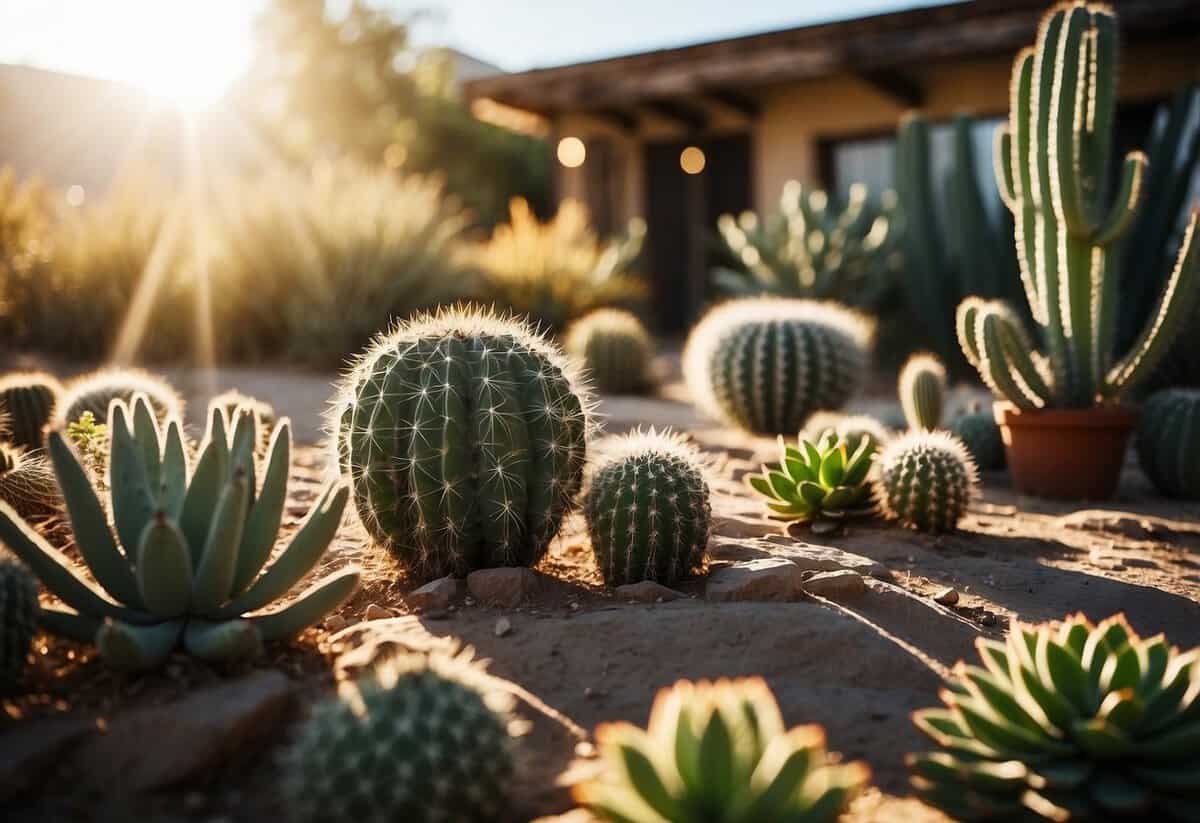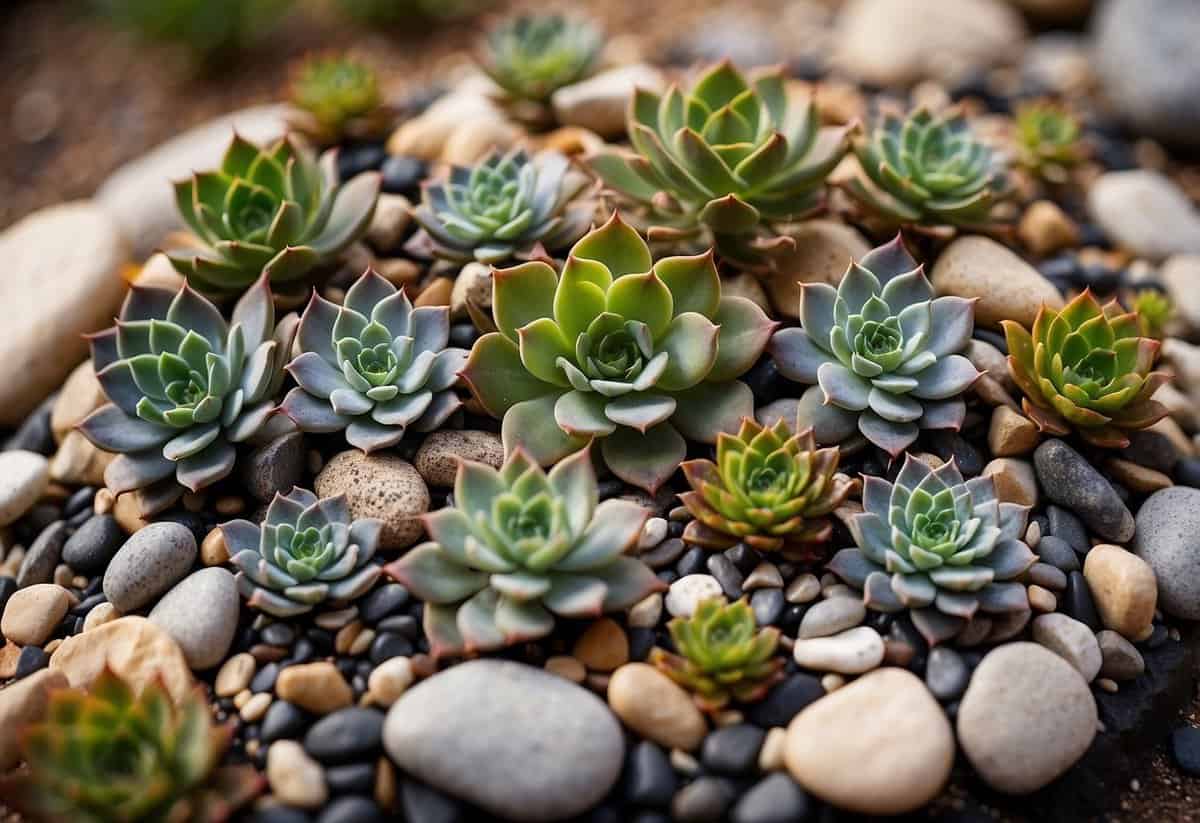Dry Garden Tips: Easy Ways to Keep Your Plants Thriving
Creating a dry garden might seem challenging, but it can be a rewarding way to design a low-maintenance and eco-friendly outdoor space. By choosing the right plants and arranging them thoughtfully, you can build a garden that thrives with minimal water.

How can you transform your yard into a stunning dry garden? From selecting drought-tolerant plants to designing efficient landscaping, there are many tips to help you succeed. This article will provide you with helpful advice on making your dry garden both beautiful and sustainable.
1) Use Mulch

Mulch is a great way to help your garden retain moisture. It keeps the soil cool and reduces water evaporation.
Spread a 2-3 inch layer of organic mulch, like straw, grass clippings, or wood chips, around your plants. Avoid creating mulch volcanoes around trees. Also, don’t let mulch touch your house to prevent pests.
Mulch can also add nutrients to your soil as it breaks down, helping your garden thrive. Avoid dyed mulch since it can contain chemicals harmful to your plants. For more details, you can check these mulching mistakes to avoid.
2) Choose Drought-Tolerant Plants

When creating a dry garden, selecting the right plants is key. Opt for drought-tolerant varieties that can thrive with minimal water.
Consider plants like succulents, cacti, and butterfly weed. These plants have long taproots or thick leaves to store water.
Coneflowers are also a great choice. They need little upkeep and attract birds and butterflies.
3) Water Early in the Morning

Watering in the early morning is the best time to care for your garden. During this time, temperatures are cooler, and there’s less wind, which means more water reaches your plants and doesn’t evaporate quickly.
Morning watering also allows the leaves to dry off during the day. Dry leaves are less likely to develop diseases. Early water helps ensure your plants stay healthy and strong throughout the growing season. Learn more at Best Time to Water.
4) Install a Drip Irrigation System

A drip irrigation system is perfect for dry gardens. It delivers water directly to the base of your plants, minimizing waste.
To start, connect your headers to a water source like a garden hose for a secure, leak-free connection. Next, use an emitter tool to punch holes in the main line and place emitters where needed.
Don’t forget to loop a 1/4″ drip line around trees and use stakes to support drippers. When everything is set up, flush the system to ensure it’s working correctly. For more detailed steps, check out this guide on installing drip irrigation systems.
5) Group Plants with Similar Water Needs

Grouping plants with similar water needs is key for a thriving dry garden. When you place plants with the same watering requirements together, it simplifies care routines and conserves water.
For example, you can put all your drought-tolerant plants like succulents and cacti in one area. This way, you won’t overwater or underwater them.
By organizing your garden this way, you make it easier to manage and healthier for your plants. This technique, known as hydrozoning, ensures each plant gets the right amount of water.
6) Use Gravel for Pathways

Using gravel for pathways in your dry garden is a smart choice. It provides a stable walking surface and blends well with the natural look of a garden. Gravel pathways can be easily maintained and help prevent weed growth by covering the soil surface.
Gravel paths also improve drainage, reducing water pooling in your garden. This makes them perfect for dry environments. Choose a gravel type that complements your garden’s color palette and texture. For ideas and tips, check out gravel garden ideas.
7) Harvest Rainwater

Harvesting rainwater is a great way to keep your garden hydrated. Start by setting up a catchment surface like your roof.
Next, install gutters and downspouts to direct the water into a storage container. Consider using diverters and roof washers to remove dust and debris.
This method helps you collect water efficiently and can be especially helpful during dry periods. Collecting rainwater is also simple and can make a big difference for your plants. If you want more detailed guidance, Epic Gardening offers some great tips.
8) Plant Native Species

Plant native species to make your dry garden thrive. Native plants are adapted to local climate and soil conditions, making them easier to care for.
They are also more resistant to pests and diseases. This means less maintenance and fewer problems for you.
Some great options include Black-eyed Susan and lavender. These can add both color and resilience to your garden.
9) Utilize Shade Structures

Shade structures can help protect your garden from intense sunlight. This is especially useful if you live in a hot, dry climate.
You can use propped canvas to cover multiple areas of your garden. This setup allows for more growth and movement.
Another option is using shade cloth, which can be draped over plants to reduce direct sunlight and protect delicate leaves.
Be sure to secure these structures well so they withstand wind and other elements.
10) Incorporate Succulents

Succulents are perfect for dry gardens. They need minimal water and thrive in arid conditions. Their diverse shapes and colors add interesting visuals to your garden.
To ensure succulents have good growth, use well-draining soil. Mix in sand or pumice for best results. Check out Martha Stewart’s tips for more ideas.
Consider planting them in raised beds. This helps improve drainage and keeps their roots healthy. Learn more about it here. Enjoy your beautiful, low-maintenance dry garden!
Understanding Dry Gardens

Dry gardens are designed to thrive with minimal water. They use plants that are well-suited for arid conditions and often require less maintenance. This makes them a great option for areas prone to drought.
Characteristics of Dry Gardens
Dry gardens are known for their water-efficient landscaping. They feature drought-tolerant plants such as succulents, cacti, and native grasses. These plants can survive with little water.
The soil in dry gardens is often well-draining. This helps prevent water from pooling around plant roots, which can cause rot. Adding materials like gravel or sand to your soil can improve drainage.
Another important feature is the use of mulch. Mulch helps retain moisture, suppress weeds, and keep the soil cool. Types of mulch you can use include gravel, bark, or decomposed granite.
Benefits of Dry Gardens
One of the main benefits of dry gardens is water conservation. Since the plants used require less watering, you can significantly reduce your water usage. This is especially beneficial in drought-prone areas.
Dry gardens are also low maintenance. Many drought-tolerant plants grow slowly and need less pruning or deadheading. This means less work for you over time.
In addition to being practical, dry gardens can be aesthetically pleasing. The variety of textures and colors in succulents and other drought-tolerant plants can create a unique and beautiful landscape. Plus, these plants often attract pollinators like bees and butterflies, adding another layer of life to your garden.
For more information, you can visit this guide on dry gardens.
Soil Preparation for Dry Gardens

Proper soil preparation is vital for a successful dry garden. You’ll need to test your soil and make the right amendments to ensure it supports drought-tolerant plants.
Soil Testing
Before planting, it’s important to test your soil to determine its texture, pH, and nutrient levels. A soil test kit from a garden center can help you find out if your soil is sandy, loamy, or clayey.
Sandy soils drain quickly but can lose moisture too fast. Clay soils retain water but may not drain well. Loamy soils are ideal because they balance drainage and moisture retention. Knowing your soil type will guide your amendments.
pH levels are also important. Most drought-tolerant plants prefer slightly acidic to neutral soils, with a pH between 6.0 and 7.5. You can adjust your soil pH using lime to raise it or sulfur to lower it. Make sure to follow the instructions on any soil amendments you use.
Amending Your Soil
To improve soil structure, add organic matter like compost, aged manure, or leaf mold. These materials enhance drainage in clay soils and water retention in sandy soils. Aim to work in 2-3 inches of organic matter into the top 8-12 inches of soil.
Mulching is another effective strategy. Apply a layer of mulch, such as straw, grass clippings, or wood chips, to reduce evaporation and maintain soil moisture. This also helps control weeds and keeps the soil cool.
You may also consider using inorganic amendments. For example, crushed granite or gypsum can improve soil drainage in clay soils, while coarse sand can be added to increase water retention in sandy soils. Be careful not to overdo it with any amendments.
Ensuring proper soil preparation will set the foundation for a thriving dry garden.







